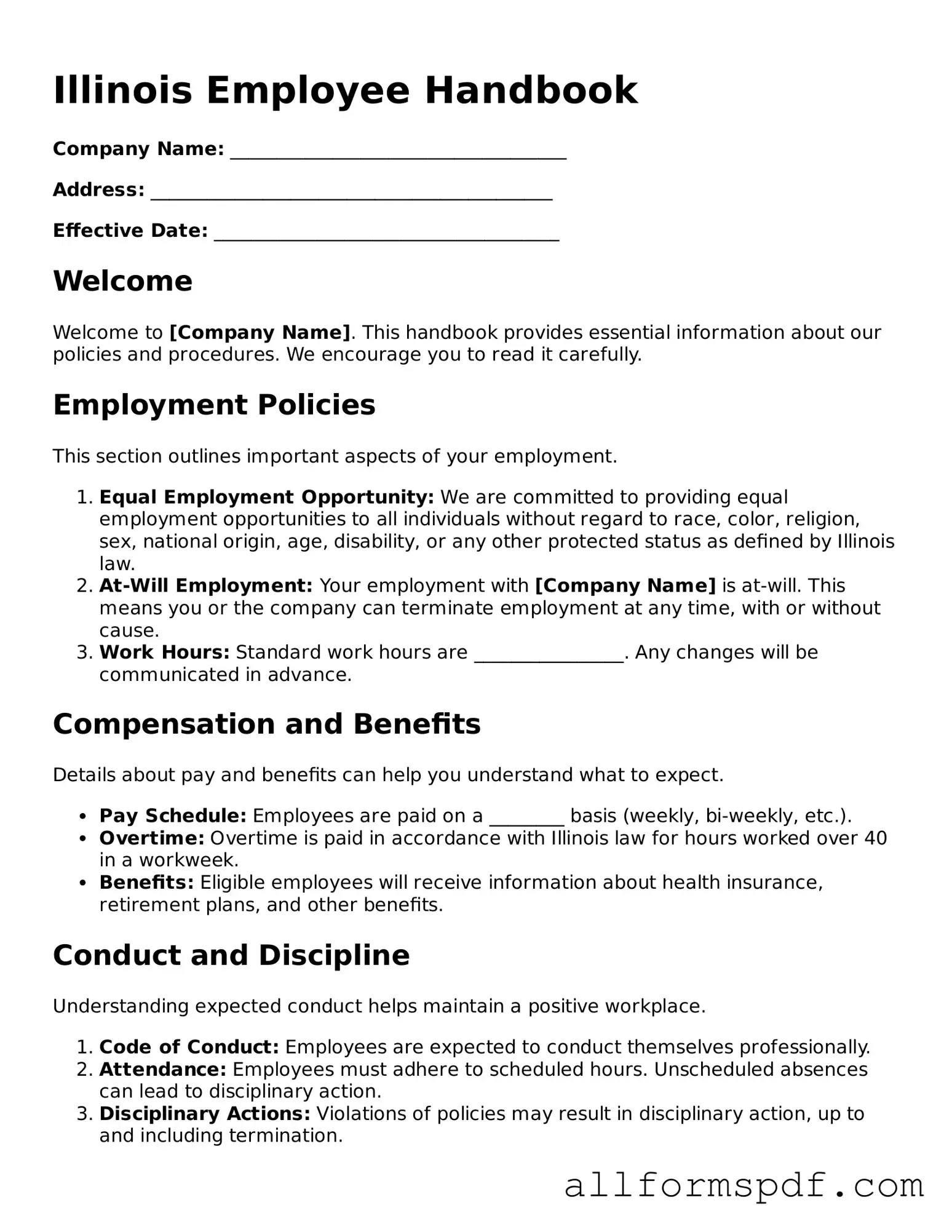Fillable Employee Handbook Form for Illinois
The Illinois Employee Handbook form serves as a crucial document that outlines the policies, procedures, and expectations within a workplace. It provides employees with essential information regarding their rights and responsibilities, fostering a transparent relationship between employers and staff. By establishing clear guidelines, this form helps to promote a positive work environment and mitigate potential disputes.
Create My Employee Handbook Now
